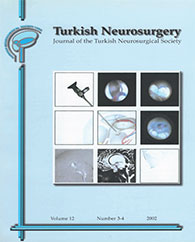2Neurosurgery, Marmara University, School of Medicine, İstanbul, Türkiye Objective: In order to study clinical, histomorphological, histochemical and immunohistochemical characteristics in hyperproloactinemic patients, we undertook a comparative study of 30 pituitary adenomas.
Methods: We used a group of nuclear, cytoplasmic and staining parameters for the evaluation of morphologic features of the tumor types. Tumors showed a large spectrum from the point of histomorphological features. By using Gomori reticulin stain, we distinguished hyperplasia from neoplasia. Additionally, Periodic Acid Schiff staining was used for the detection of glycoprotein content in tumor cell cytoplasm.
Twenty-six cases have been analysed using anti-prolactin monoclonal antibody, and an overall of 23 cases for antigrowth hormone monoclonal antibody immunohistochemically.
Results: We found diffuse positivity in 15 cases, sparse positivity in 8 cases for anti-prolactin antibody. Three cases showed no immunoreactivity for prolactin. Six cases showed diffuse positivity and 2 cases showed sparse positivity for anti-growth hormone monoclonal antibody. Fifteen cases were immunonegative for anti-growth hormone monoclonal antibody. Five cases were immunonegative for PRL but positive for GH. Four of those cases had increased serum GH levels and were presented with acromegaly.
Conclusion: We concluded that there is no direct correlation between serum hormone levels and immunophenotypic expressivity of pituitary adenomas. The reason of prolactinemia in cases showing GH immunopositivity was thought to be a stalk effect. Using electron microscopy has to be taken into consideration to identify the type of the pituitary adenoma while having sufficient results for immunohistochemical studies.
Keywords : Hyperprolactinemia, immunohistochemistry, pituitary adenoma




